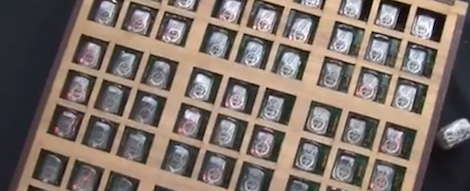
[Carnivore] uses a Pipo Max M1 tablet. It’s an Android device that is very responsive thanks t the 1.6 GHz dual-core processor and it runs Jellybean (latest version of Android OS). The one thing he wasn’t so happy with is battery life. Under heavy load it lasts about three hours. When reading an eBook that use can be stretched to 10 hours. His solution was to add an external battery. It turns out the 9.7″ screen makes the body of the device almost exactly the same size as an iPad, so he made an iPad external battery case work with the Android tablet.
[Carnivore] started the hack by disassembling an iP6000 case which houses a 6000 mAh battery. He removed the dock connector and fitted in a 2.5mm power jack. Luckily the buttons on the Android tablet are in nearly the exact same place as those on an iPad, with the power button hole needing just a bit of enlargement. The case charges itself and the tablet’s internal battery using a microUSB port which means he no longer needs to carry around a special power cord. The new hardware increased the battery life by about 75%.












